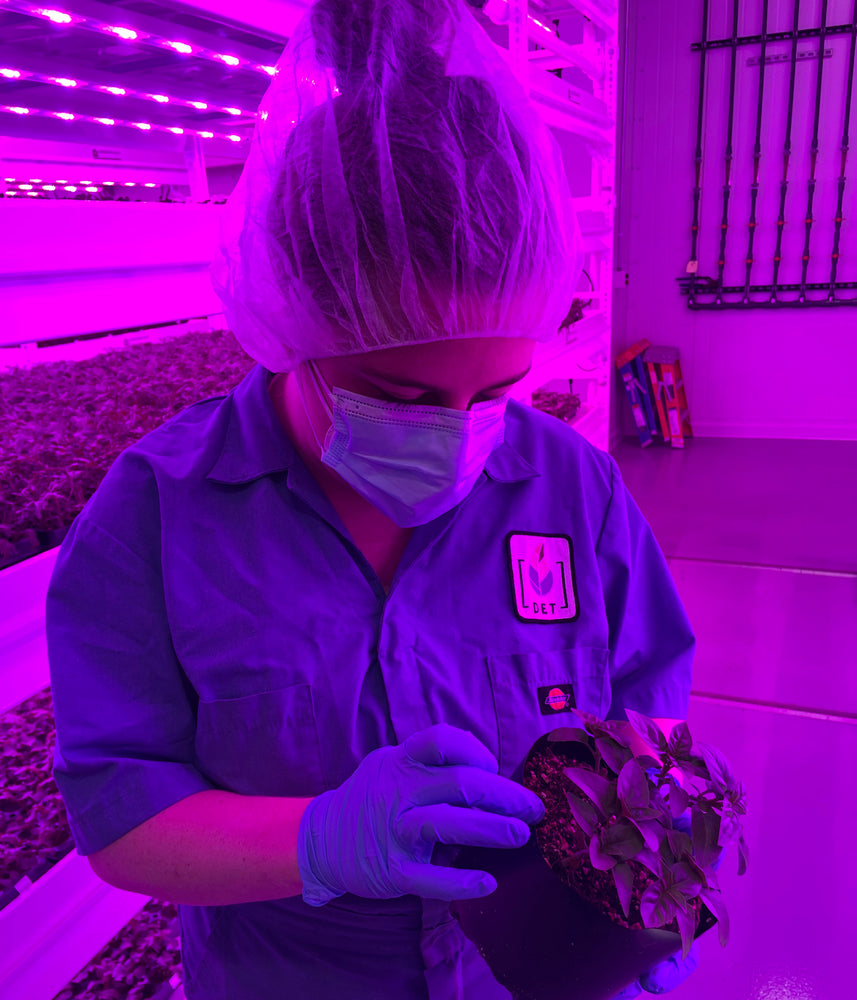
Tatum, our Horticulture Lead, spends her days checking on the plants, making moves to solve any problems, and researching how to better grow our current crops. She also oversees research and development for all things plant-related. This week, she walks us through why it's so important to do ongoing R&D on a farm like ours!

Working in a fairly young industry where there isn’t a general rulebook to follow, there is always room to improve and innovate. We can base some of our decisions on industries that are more established (hydroponic cannabis industry or field agriculture), but we are also in a unique position where many of the questions we ask simply don’t have complete answers. This is where research and development plays a huge role.
Currently our R&D structure is about troubleshooting some of the problems we face on a day to day basis. Maybe we think we can get a few more ounces off of a tray of romaine, or we want the color of our pak choi to pop...regardless of the end goal, the question that encompasses nearly all of our R&D projects is: “how can we make this better?”.
One of the core values of our company is science, so when we ask ourselves how to improve, we are committed to making data driven decisions, rather than following our gut. After reviewing internal data and patterns and referencing reputable outside sources, we will hypothesize what outcome a certain treatment will have and try to run clean A/B tests. This means we have a control treatment, where no change is made, so we can compare the control to our experimental treatment to see if we can achieve the results we expect. Changing as few variables as possible at a time is incredibly important; if we change too many variables at once, it is nearly impossible to tell what treatment led to the results.
Lately my focus has been on improving the crop quality and yields of our core greens. Primarily, I have been working on figuring out which wavelengths of light each crop thrives under, comparing data between crops grown under our Philips GrowWise lights (the pink lights that have adjustable red, blue, and far-red wavelength values) and our full-spectrum (white) BIOS lights.
Aside from subjective quality measures, from preferred plant size to color vibrancy, a data point I have been tracking as a way to compare samples is a Brix reading. Often used in wine/beer production, Brix measures the percentage of sugar found in a sample. While leafy greens certainly aren’t the sweetest food, we have observed that higher Brix values tend to lend themselves to more flavorful, better quality crops when tasted side by side with the same crop of a lower Brix. Taking this measurement into consideration aids us in using science over personal preference when choosing what light source our plants should grow under.
Looking to the future, we hope to move our R&D focus to forecasting industry trends and working to expand our offerings to include more herbs and colorful microgreens, and have recently made some very exciting progress with Basil in particular. Planted pesto anyone?
